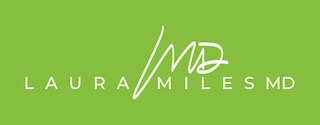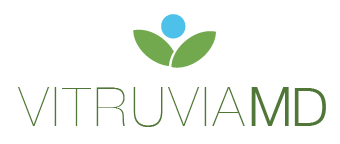I see so many people who come in “controlled” on cholesterol medications or are told their cholesterol level is “fine” because they have a good ratio who are NOT fine! Over the next few weeks I am going to dive into different parts of cholesterol testing but today I want to talk about an overlooked marker that is proving to be a huge contributor of plaque formation causing heart disease. Cue triglycerides.
We all know we see a triglyceride number on our cholesterol panel but what does it actually represent? Triglycerides are a type of fat. When you eat, your body converts any unused calories into triglycerides and stores them in your fat cells. In between meals your body releases triglycerides to help with energy. But when we get too many triglycerides it contributes to hardening of the artery walls and can cause thickening (atherosclerosis). All of this leads to increased risk of stroke, heart disease and heart attacks. READ ON to learn more about what your triglyceride number should really be and ways to get these down (without medication)….
What is a normal triglyceride level?
The triglyceride level on your blood test is one of the markers that can be sensitive to eating so the reference range of “normal” will be different if you are fasting or not fasting. I prefer a non-fasting number most of the time to see how your body is using its’ calories. A non-fasting triglycerides level should be less than 150. A fasting level should be less than or equal to 75. These will be different numbers than the “normal” reference range on your labs so pay attention! If you have a triglyceride level above 500 then you have a serious issue that needs medical intervention before you stroke!
You can have high triglycerides for a variety of reasons.
Habits that cause increased levels include:
- Regularly eating more calories than you burn
- Cigarette smoking
- Excessive alcohol use
Certain medical conditions can contribute to high levels like:
- Type 2 diabetes or pre-diabetes
- Obesity
- Low levels of thyroid hormones (hypothyroid)
- Liver or kidney disease
- Some genetic diseases
Medications can also cause triglycerides to increase such as:
- Diuretics
- Non bioidentical hormones
- Steroids
- Beta blockers
- Some immunosuppressants
Foods that cause an increase in triglycerides include:
- High fructose corn syrup
- Refined carbohydrates (breads, rice, pasta)
- Alcohol
- High sugar foods
- Butter
If you have high triglycerides, REGARDLESS of your other cholesterol numbers you need to address this. First start with these lifestyle changes:
- Limit your sugar intake
- Decrease any sodas (better yet eliminate them) that have high fructose corn syrup
- Decrease portion sizes of starchy veggies (potatoes, corn, beans)
- Limit refined grains (breads, cereals, rice, pasta)
- Reduce alcohol intake
- Limit saturated fats to no more than 7% of your diet
- Lose weight
- Exercise
- Do not skip meals
- Stop smoking
Sometimes more than lifestyle changes are needed to lower the levels. Triglycerides are very sensitive to fish oil so I always start there. Most people will need around 2000mg daily. It is important to choose the right fish oil. First, you need a company that is testing for heavy metals. Fish is notorious for being contaminated with heavy metals (mercury especially) and now radiation. Then you need to know what you are looking for on a label. Don’t trust the front of the jar because that’s just marketing. Turn your bottle around and look for two key numbers, DHA and EPA. These are your active ingredients. You will want the sum of those two together to equal 2000. If your bottle says a serving size is 2 capsules and you have 500mg of DHA and 500mg of EPA in each serving than you will need 4 capsules to equal 2000mg. The ratio of EPA and DHA can be important, too. I recommend different ratios depending on the medical condition I am addressing but for lowering triglycerides you want the DHA number to be really close to the EPA number so a fish oil that has 500mg of EPA and only 50mg of DHA will not be a good choice.
Niacin is also useful for lowering triglycerides but can be tricky to take because of the flushing it causes. This is not an allergic reaction. Niacin naturally dilates the blood vessels creating that flushing sensation/look. Start with low doses and gradually work up to 500-1000mg. Higher doses (1000mg plus) need to have liver function markers followed as some liver enzymes might get elevated with those levels. Ways to decrease the flush include eating applesauce or taking a baby aspirin 20-30 minutes prior to taking the medication. There are also non-flush niacin capsules but these are not as good as the flushing ones and may cause more liver issues.
There are also prescription medications for triglycerides that may be used if the desired results are not obtained with lifestyle modification and supplements. In severe cases of very high levels there is a procedure called apheresis that pulls off the extra triglycerides out of the blood which may be life saving.
Don’t ignore these lipid particles even if your other cholesterol numbers are “normal”. Triglycerides are causing inflammation and they need to be lowered!
To your health,
Laura









